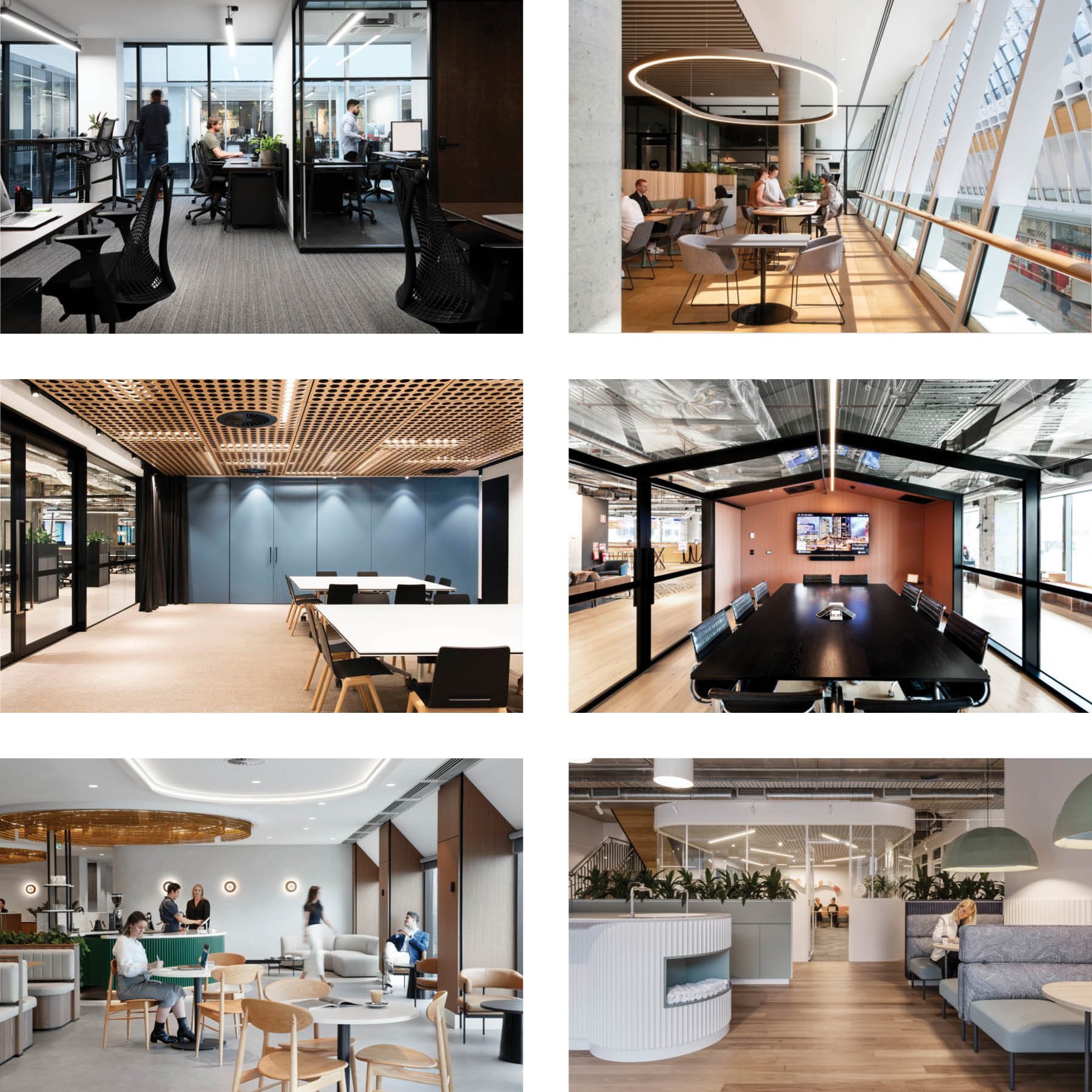As the slow drift back to higher levels of office occupancy continues, most organisations realise that some form of hybrid working is here to stay, and the future is uncertain.
For a long time, the tradition methodology for providing a workplace for your business has been broken. Does it still make sense to commit to space for many years and spend the first year designing it and building it?
A VERY traditional approach to the bespoke office in the era of Mad Men
When I was undertaking workplace strategies 25 years ago, which admittedly was some time after the image above, I would ask a business what their staffing projections would be in 2, 4 or 6 years. (now they would think I was an idiot to ask that…) We could then apply an efficiency calculation of say 1 person per 15 m2 and arrive at a total area requirement.
They could then go to market via their favourite Tenant Representative and assess competing proposals provided by building owner’s leasing agents and commit to space for maybe 6 or 8 years – with a resultant financial incentive. The design team could then go through a lengthy process to design exactly what they needed, and it could be tendered and built. This whole process could well take a year or more.
At the end of that initial lease, they might exercise an option or start the process again. One of the attractions of starting again was a new incentive – and getting all new stuff!
Vested interests like the Property Council of Australia (who are a lobby group for building owners) have been reluctant to move away from a variation on the traditional model, because they have built their business on that process.
So which one of these is….. Government, Media, Resources, Manufacturing, Property or Financial Services?
In earlier generations of workplace there were much greater physical differences in workplaces. You could have been led blindfolded into a workplace, and when the blindfold was taken off you would have been able to have a reasonable guess at what the business did….
Now not so much…
If the blindfold was whipped off in 2024 you would probably see most people sitting at rectangular desks with a laptop and a second monitor (if they weren’t working from home or a 3rd place) There would probably be quiet rooms, meeting rooms and collaborative spaces. But unless there is branding on the wall what do they do?
Is it Pharma, a Super Fund, Government, Media, Financial Services, Accountancy or Tech ?
They are all starting to look and function in a very similar way. What may be more important to differentiate their space are the shared amenities in the building they are in, and what the surrounding neighbourhood can provide.
Probably shrinking opportunities for designers to create a unique bespoke solution!
And to get those all-important images for Social Media…
If a generic modern flexible space could work for a business, and was available - why would most organisations employ their own designer and spend a year to create a bespoke solution unless they truly had unique requirements?
There will still be a need for the space to reflect the brand and support your culture, but that can be achieved with an overlay, some of which might be digital rather than building a new fully bespoke solution.
Recent co-working spaces in Australia
We are becoming used to paying for things as and when we need them, whether that be a holiday house, a boat, an apartment, a meal or a car in our personal lives.
Businesses are already adopting the same approach to many of their requirements:
Cloud computing
Software as a service
Freelance or contract staff
Virtual assistants
Pay per click advertising
Gig economy services
Technology rentals
Coworking spaces
If the physical modern workplace is becoming more generic the inflexibility of traditional long-term commitments to bespoke spaces are increasingly standing out as ripe for disruption and re-invention.
Coworking has been around for a while now and we are seeing growth in spec space from small suites to whole floors or multiple floors – opening up greater opportunities to pay for what you need as you need it.
The answer has to be a new way of thinking about how space can support your business – to give you flexibility to change how much space you have and the occupancy and behaviours it supports.
Some of the things you might consider are:
Paying for space as you need it (with co-working or other flexible solutions)
Taking already fitted out new spec space on a flexible lease
Subleasing suitable space
Re-engineering your existing space into a more flexible solution
Designing a new bespoke space if your requirements are truly unique
Next Workplace don’t have any vested interests in turning the workplace strategy we prepare for you into a big expensive fitout project. As independents we are happy to give you the best advice we can on which of the above options will work the best, for your people and business.













